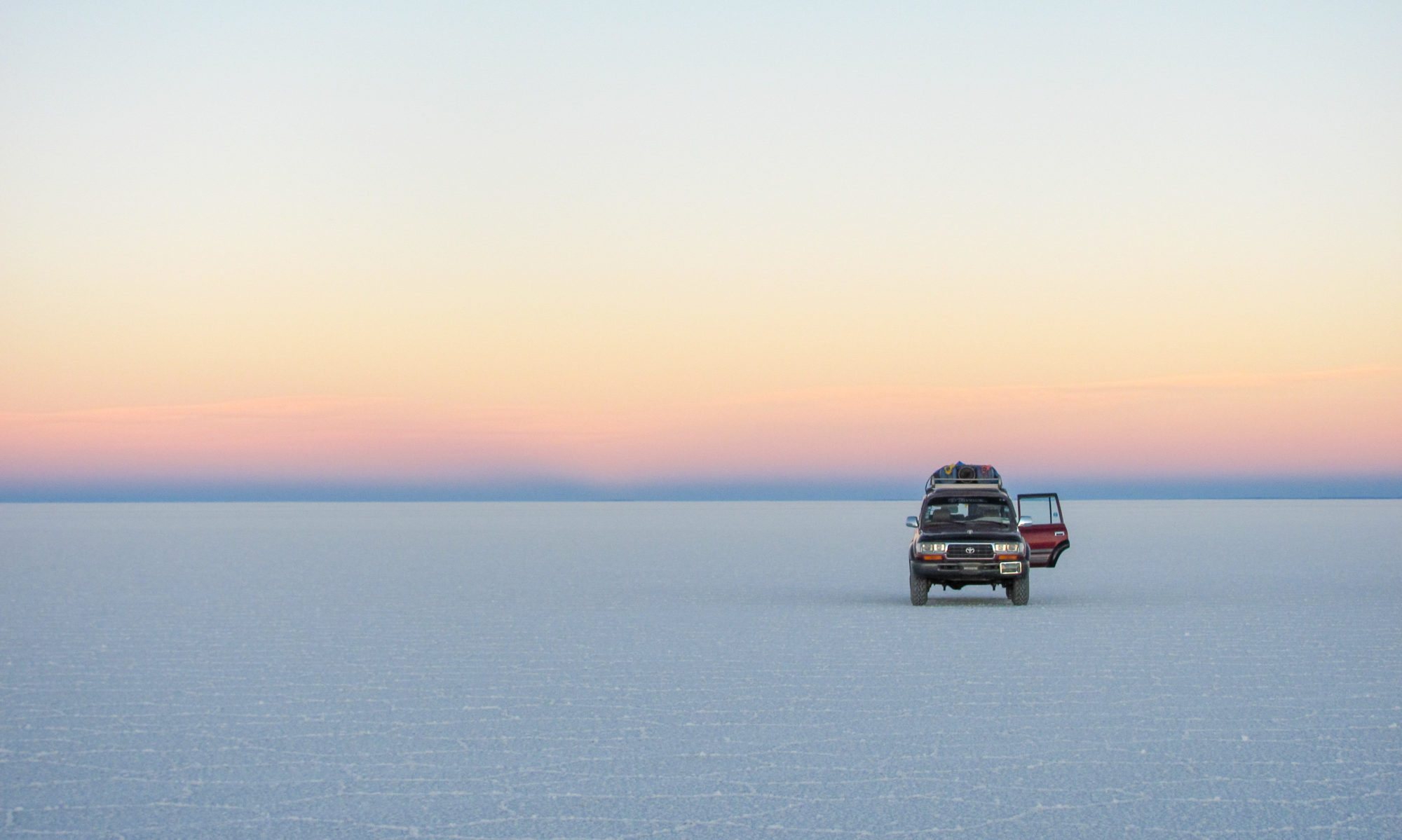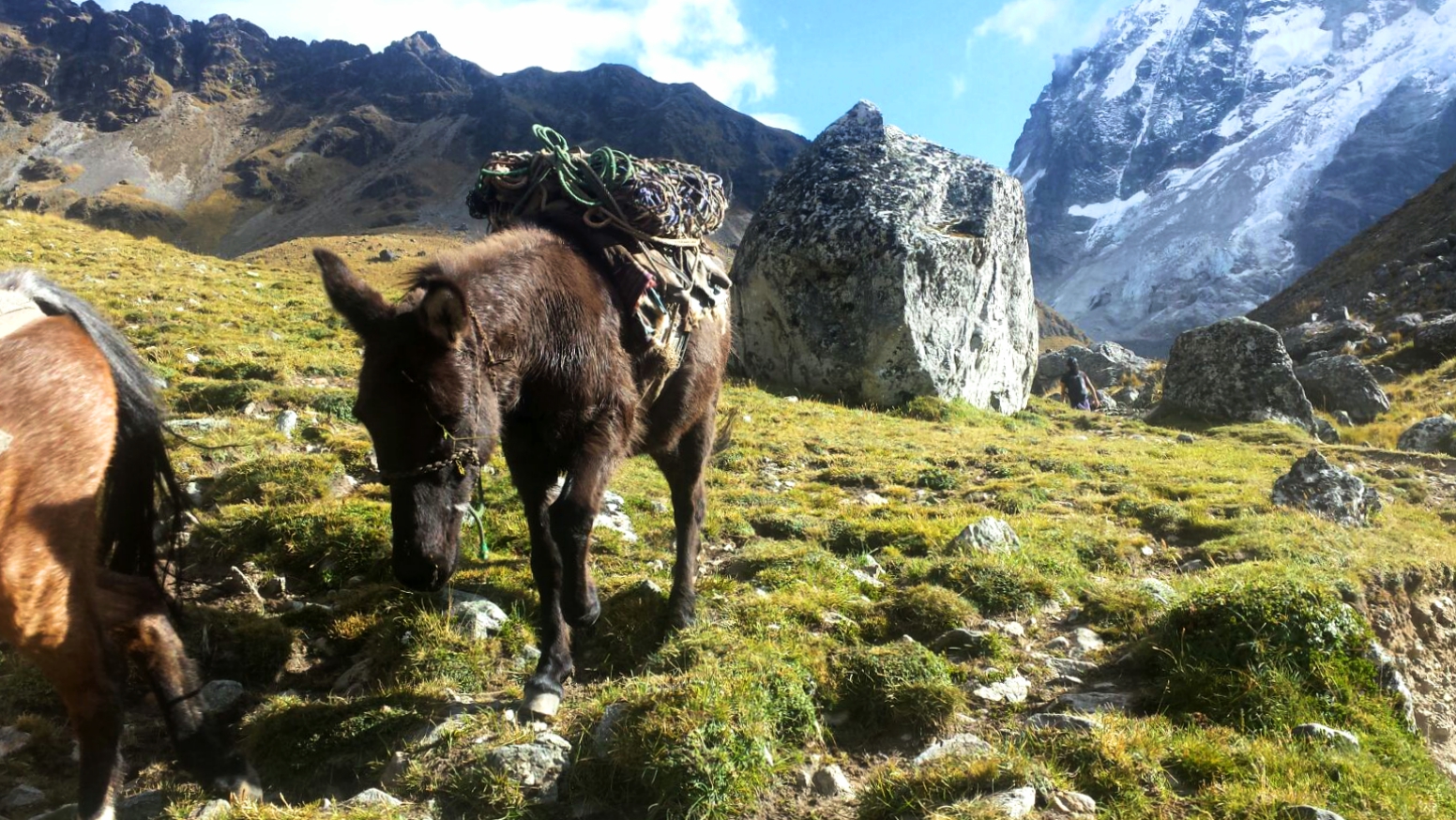The best way to get to the holy city of the Incas is not the easiest, but the 5 day/4 night Salkantay trek to Machu Picchu is worth every drop of sweat. You’ll be balancing rocky ridges between snow-capped peaks the one day, only to decent into lush rain forest the next. You’ll see glaciers, cross cold mountain streams, eat ripe fruits straight from the trees and relax in beautiful hot springs after a hard day of trekking. Salkantay trekking has it all and more, because not only is this an epic walk, it is also the route to Machu Picchu.
– Preparation –
Independent or joining a tour?
Can the trek over the Salkantay trail be done independently or should you join a tour? The short answer is that it can be done solo, but I do not recommend it.
The problem is not the Salkantay trail, which can easily be found with a good map. Nor water, which can be dealt with by using purifying tables. Rather the combination of climbing up to 4600 meters above sea level and the absence of food and sleeping options that make it hard. You will be forced to carry full camping gear and supplies with you the whole way.
Furthermore the guided option is incredible good value for money. Not only do you not have to worry about meals and tents. A good guide will explain all about the lands and how the Inca’s used to live in them as you roam through them. Group trekking is also a great social activity as you meet lots of new people and you feel very connected when you just successfully complete a 5-day trek! So for the Salkantay trek to Machu Picchu, the advantages of group trekking really outweigh those of doing it solo.
How to book
Where the Inca-trail forces you to book ahead for months and months the Salkantay trek can be booked the day before you intent to leave. There are many company’s that offer Salkantay trekking so it can be tricky to find the right one. My recommendation is booking with Liz’s Adventure, located at Calle del Medio 114, Cusco. You might need to understand a little Spanish to book, but the tour guides speak English very well. The same tour can be booked with Ecotours, although they will not tell you so.
As a price-reference: I paid 635 soles without the train but including the entrance fee to Machu Picchu and I would recommend booking the same package. The train is incredibly overpriced and there is a very cheap return option by bus (which is explained here ).
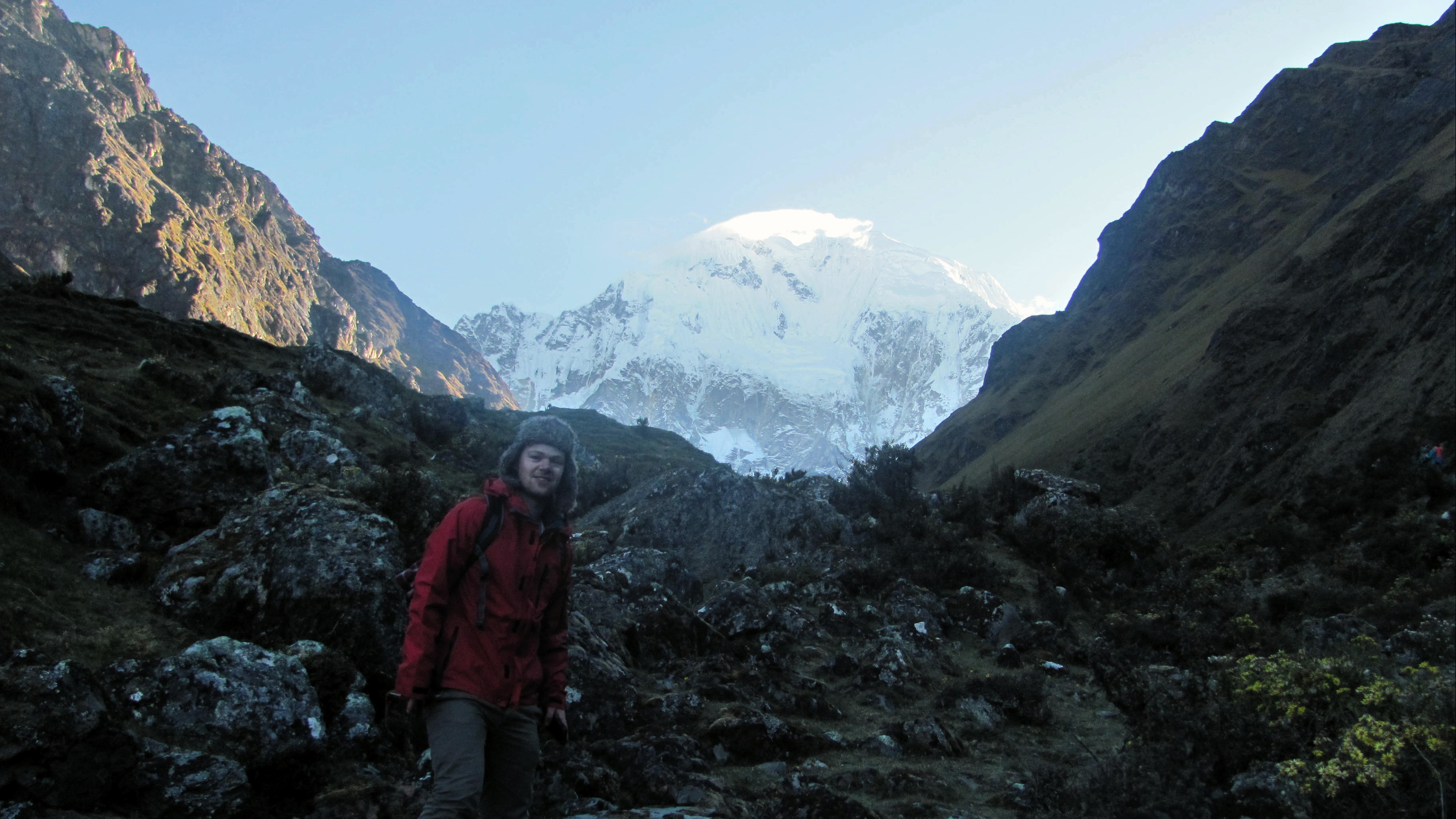
Acclimatize
Make sure you are acclimatized to the altitude before embarking on this trek. Stay a few days above at least 2500 meters as otherwise the chances are high that you experience altitude sickness. Check out this read on how to cope with the altitude in Peru.
Training for this trek is not necessary. It might be tough, but everyone with a normal fitness level should be able to complete it. Special trekking shoes are also no necessity. Sure they make the trek a lot easier but sport shoes will also do the trick. Make sure your shoes have proper grip, give ankle support and that you’ve walked in them before.
What you should rent in Cusco
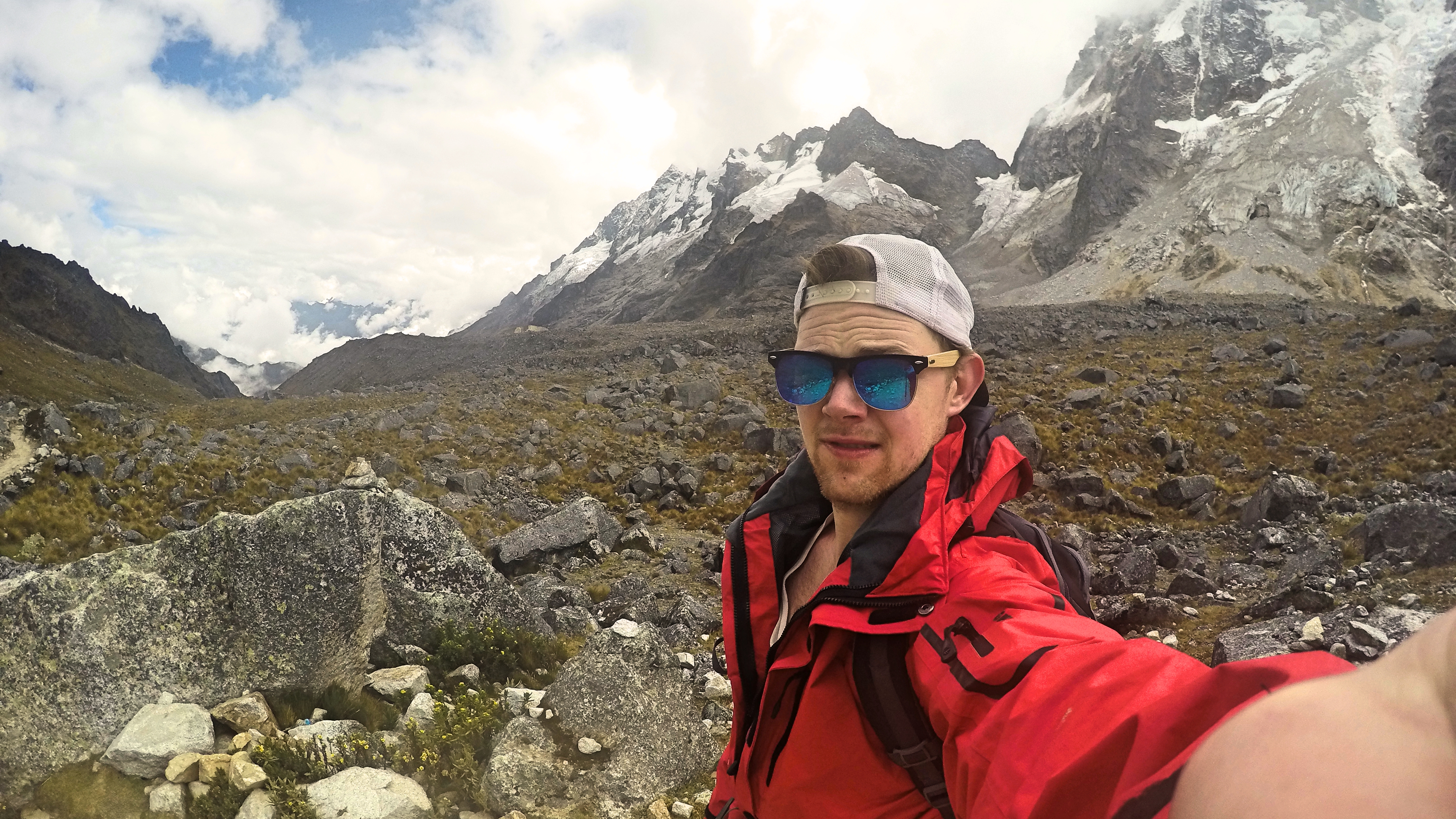
What you MUST BRING are a water/wind-proof vest, a warm hat and a sleeping bag that can stand sub-zero temperatures. all can be bought/rented in Cusco. Also do not forget your swimming gear for the hot springs. During the day, even at higher altitudes the temperatures are not too bad and generally you will be fine walking in shorts, but dress in layers as the weather can shift in five minutes. After sundown the temperature rapidly plummets to sub-zeros on the first night. If you do not want to freeze to death during dinner and be a bit social afterwards taking one set of warm clothes might be a good idea.
Other than this pack as light as you can. The less you carry, the easier and more enjoyable the trek will be (and you really do not need more than 1 extra set of clothes anyway).
– Salkantay trekking –
Day 1 on the Salkantay trail
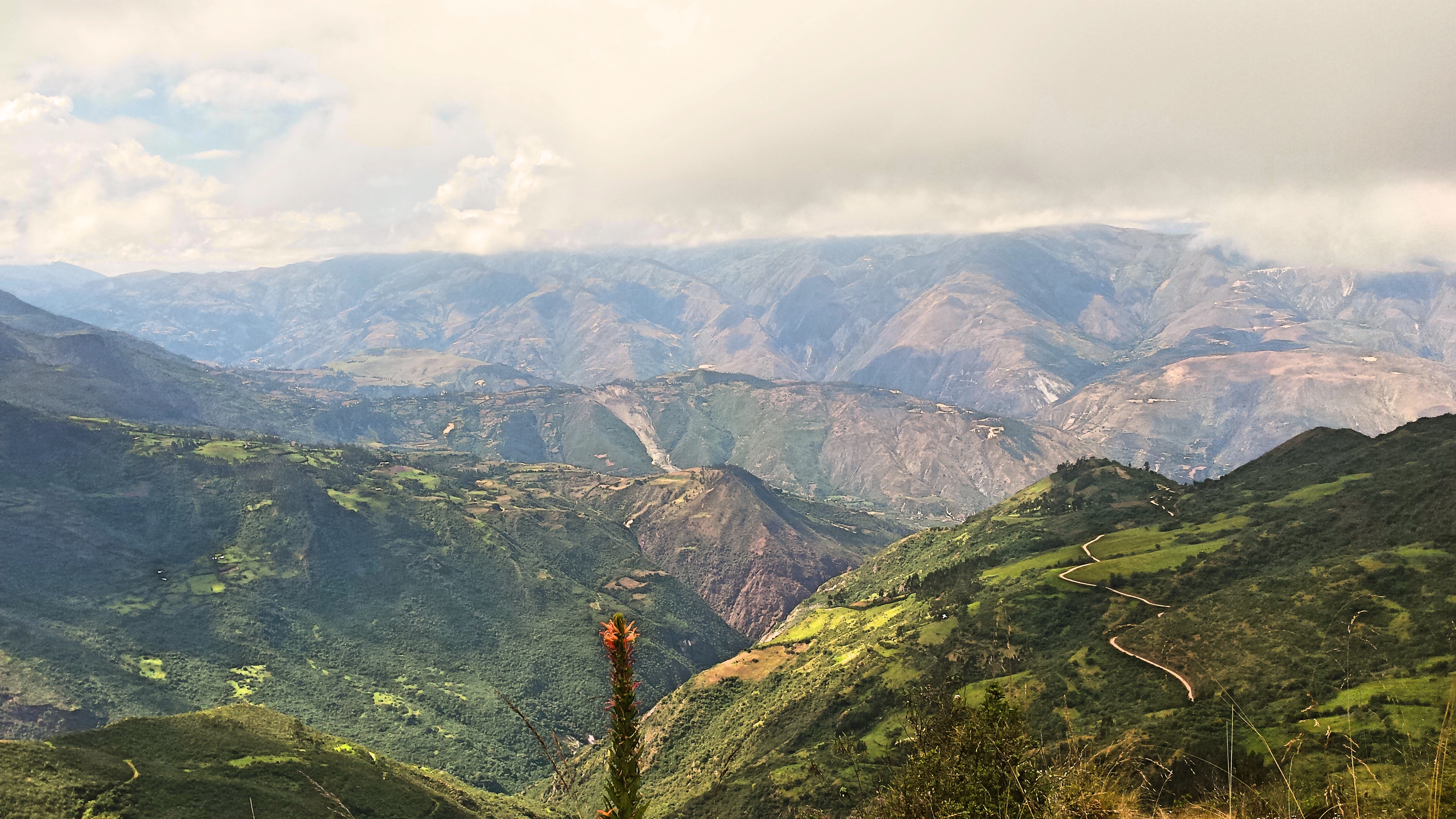
After being picked up at 5:00 AM and driven for about an hour you arrive at the start of the Salkantay trail. You immediately find yourself on an epic path with the peak of Salkantay ahead and a steep cliff on your right. The first day is almost Jurassic. Mountainous terrain, think big boulders, icy streams and a lot of ascending. As donkeys are able to climb this part a part of all luggage is carried by them.
First camp is situated at around 3900 meters where you will arrive sometime in the afternoon. An additional 300 meter climb can be done from here up to a small glacier lake which will be the hardest 45 minutes of the whole trek.
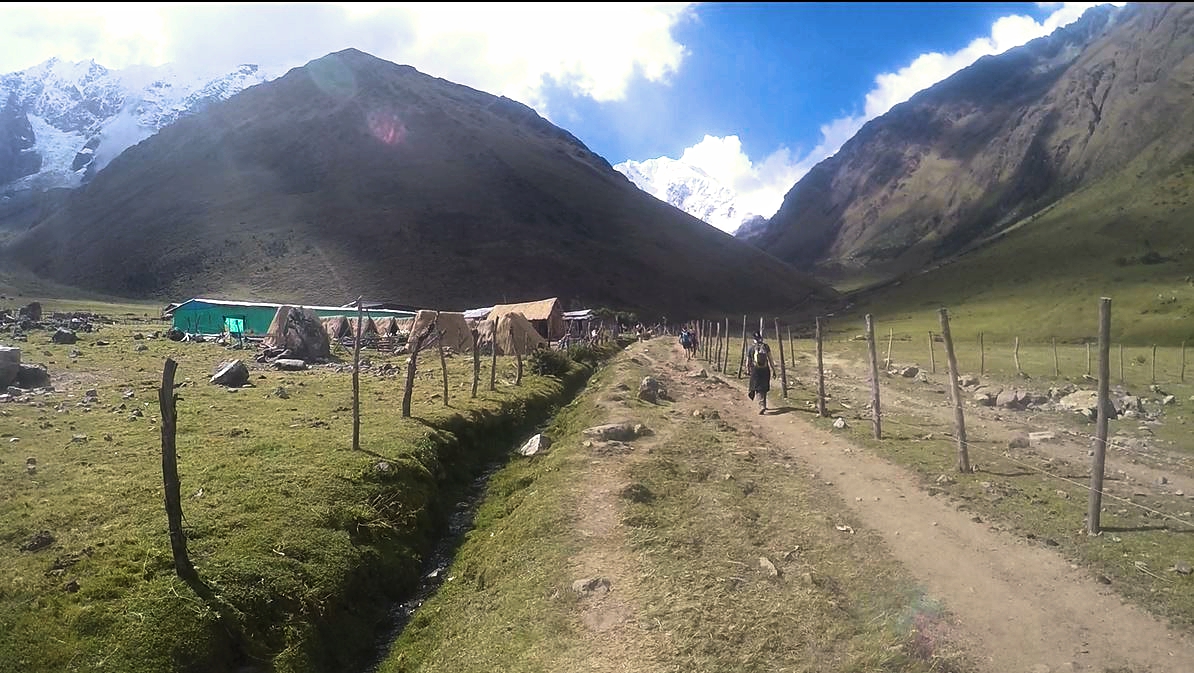
Day 2 on the Salkantay trail
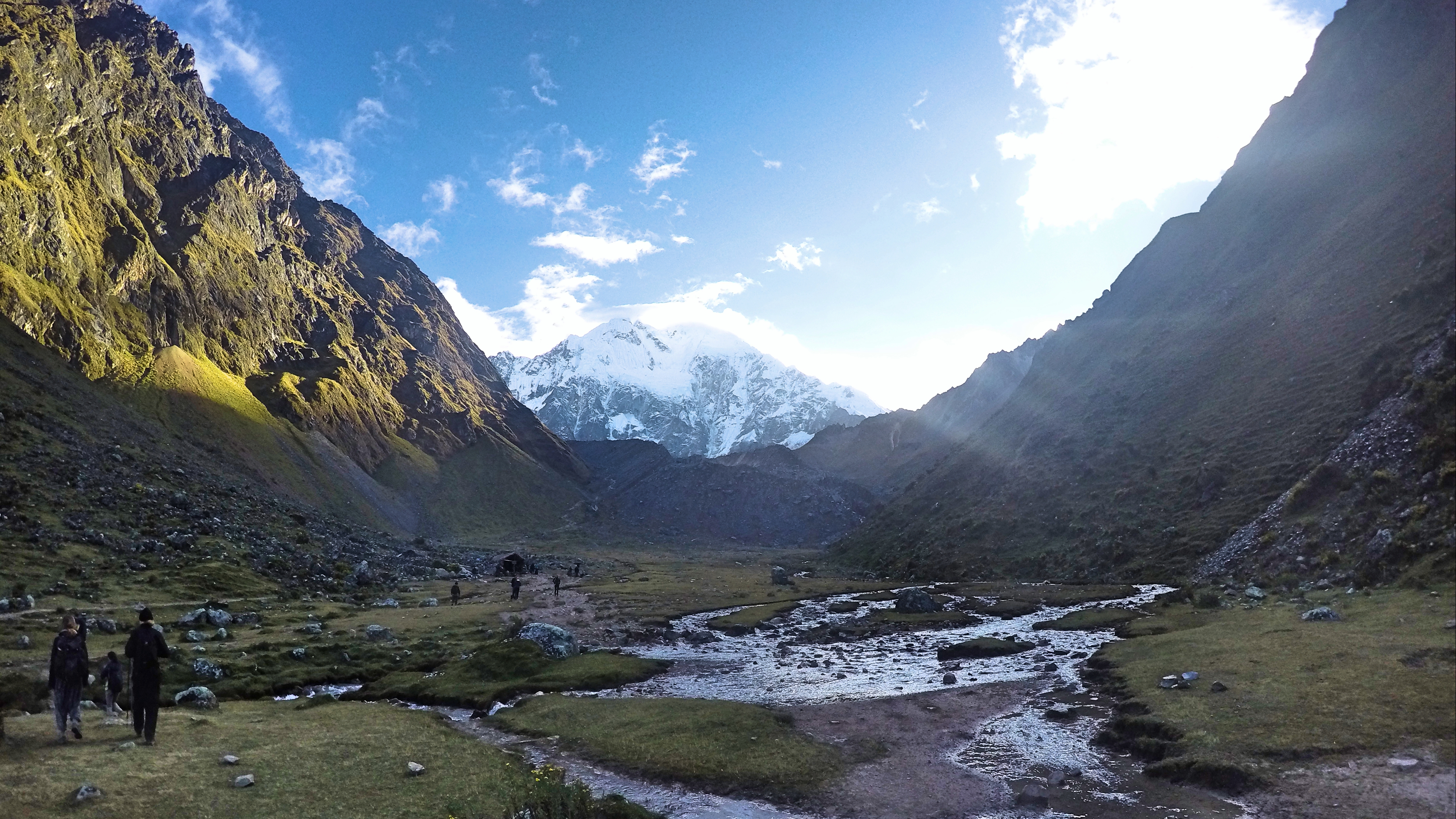
Next morning you get up early again to climb to the highest point at 4600 meters. Afterwards you traverse on a steep and somewhat dangerous mountain ridge. The terrain mimics the surroundings of Frodo and Sam while they try to get into Mordor. The walking is hard and quite technical, but the views are just spectacular. After this epic piece of Salkantay trekking you descend more than 1500 meters down into a cloud forest. This is where you have your second camp. The climate is now shifting and it gets warmer and more humid.
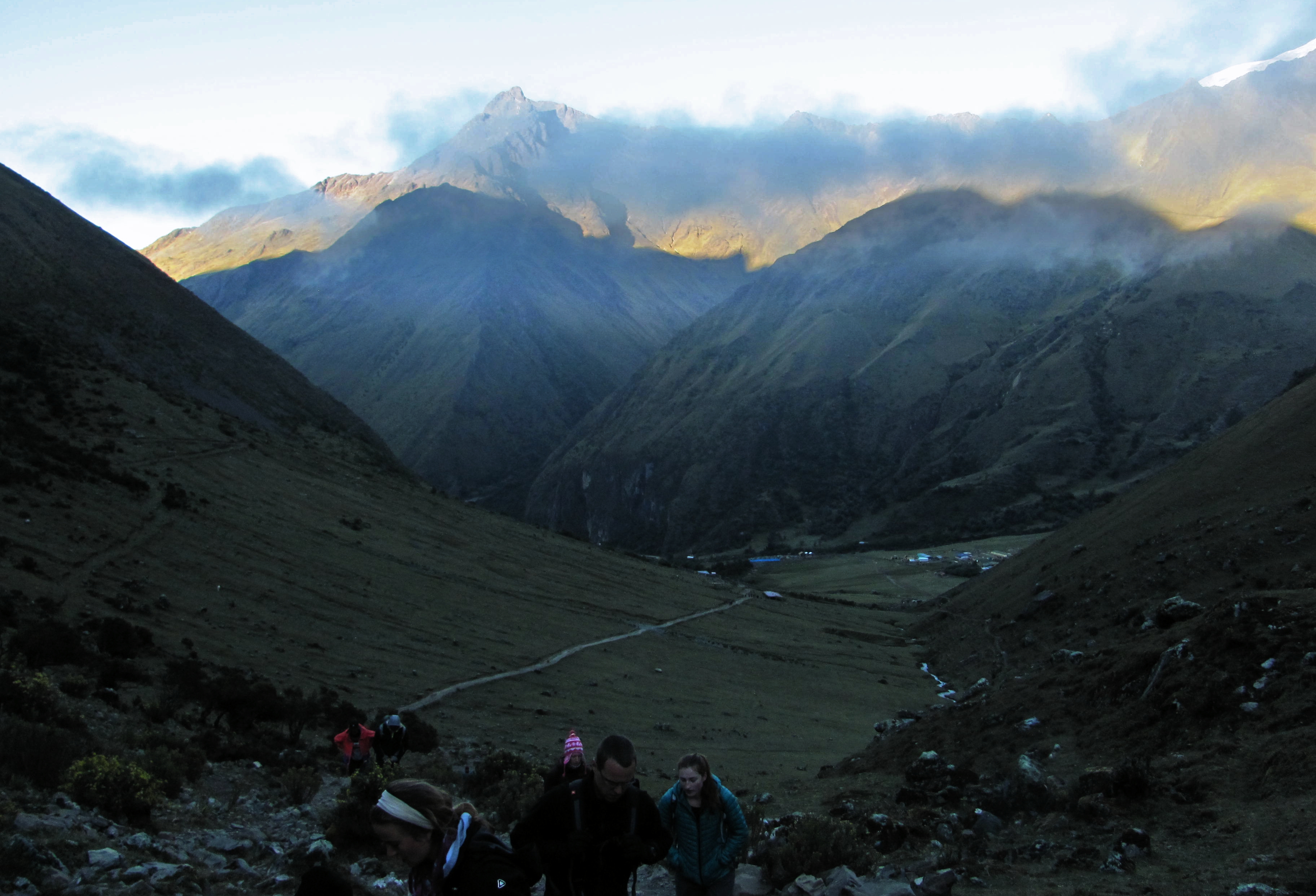
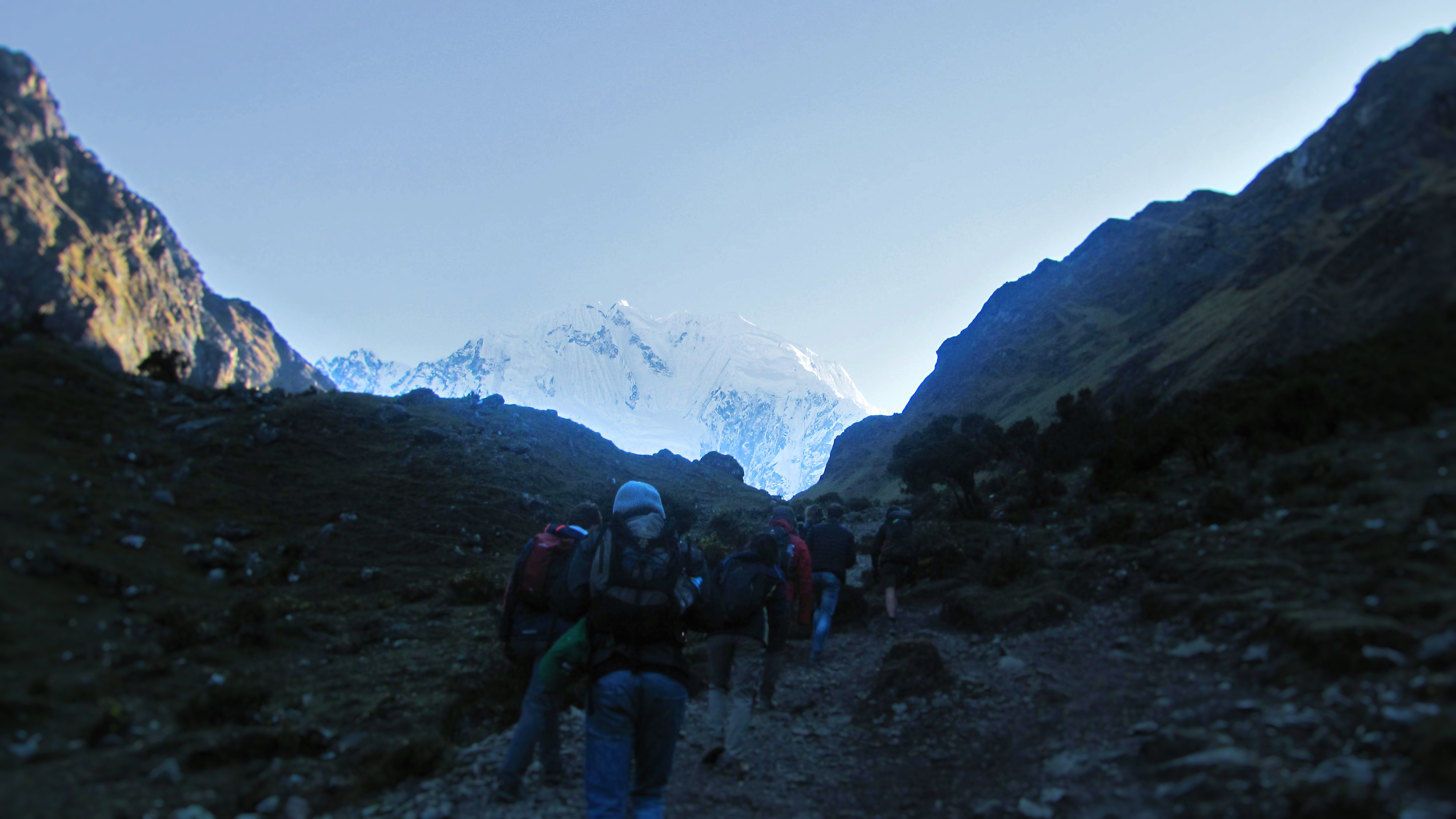
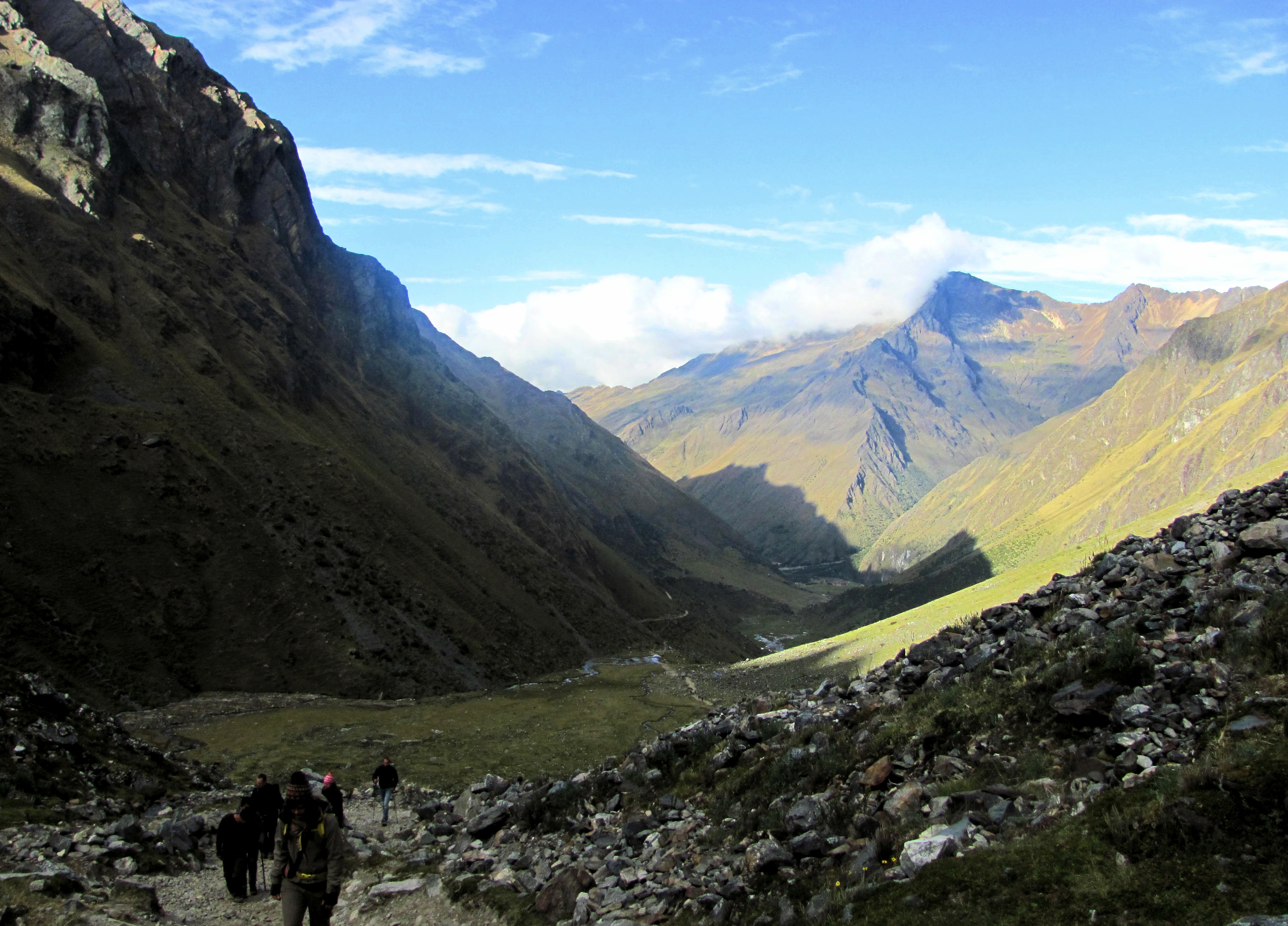
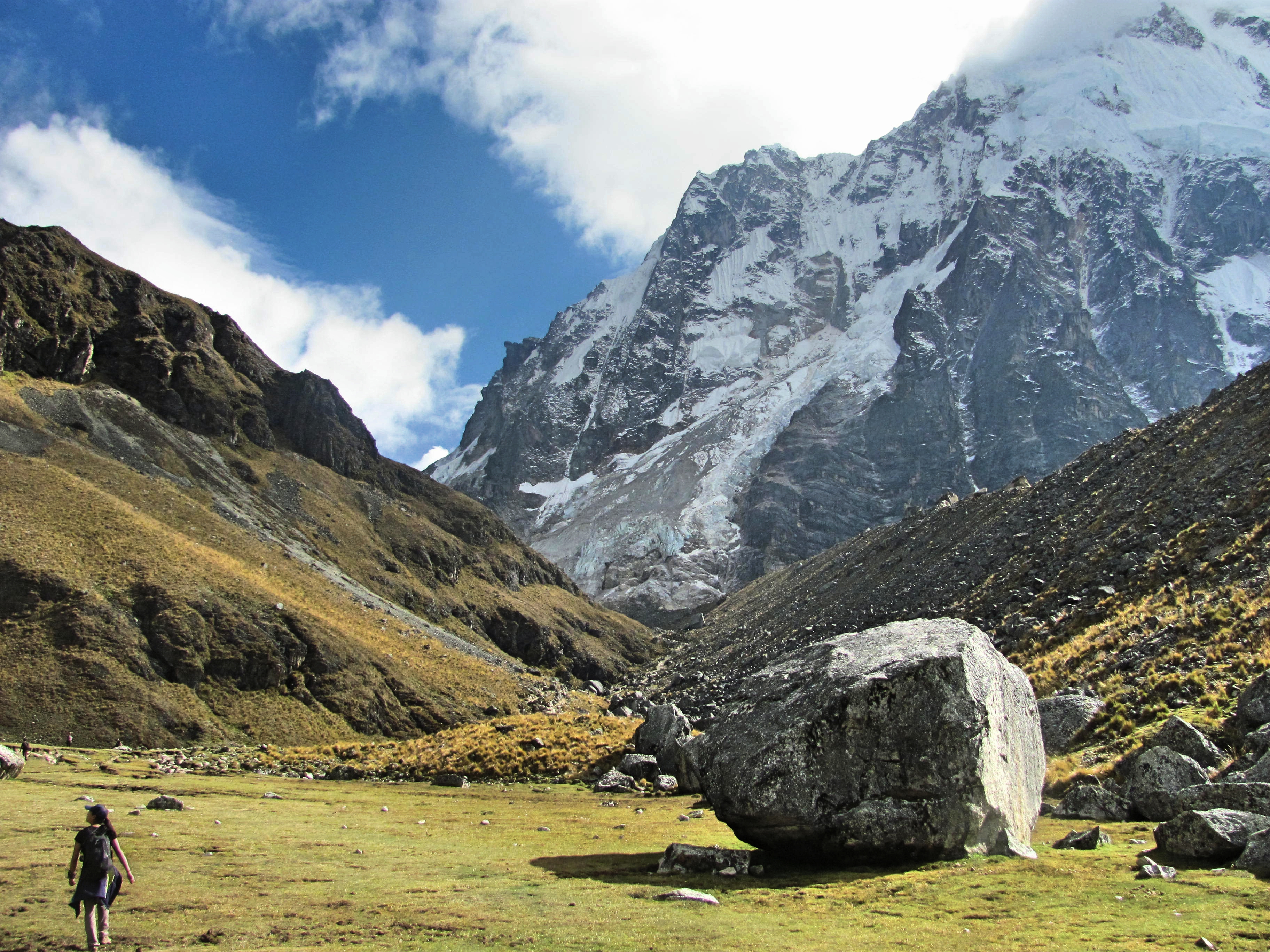
Day 3 on the Salkantay trail
The third day is through cloud and rain forest as you further descend. You walk up and down along a river and see coffee- and fruit trees all around you.
Some locals are selling fruits and sometimes you’ll see tropical fruits hanging in the wild. Do not pick them unless you are sure the land does not belong to some villager. As the donkeys cannot get to this part you will be carrying all your luggage yourself now, but the lower altitude makes that a whole lot easier. You’ll camp at a more inhabited place and there will probably be some social activities at night.
Before bedding down you can take a collectivo to the nearby Santa Teresa hot springs. They are really pretty clean and have an amazing backdrop of the Andes so you should really not miss out on this treat.
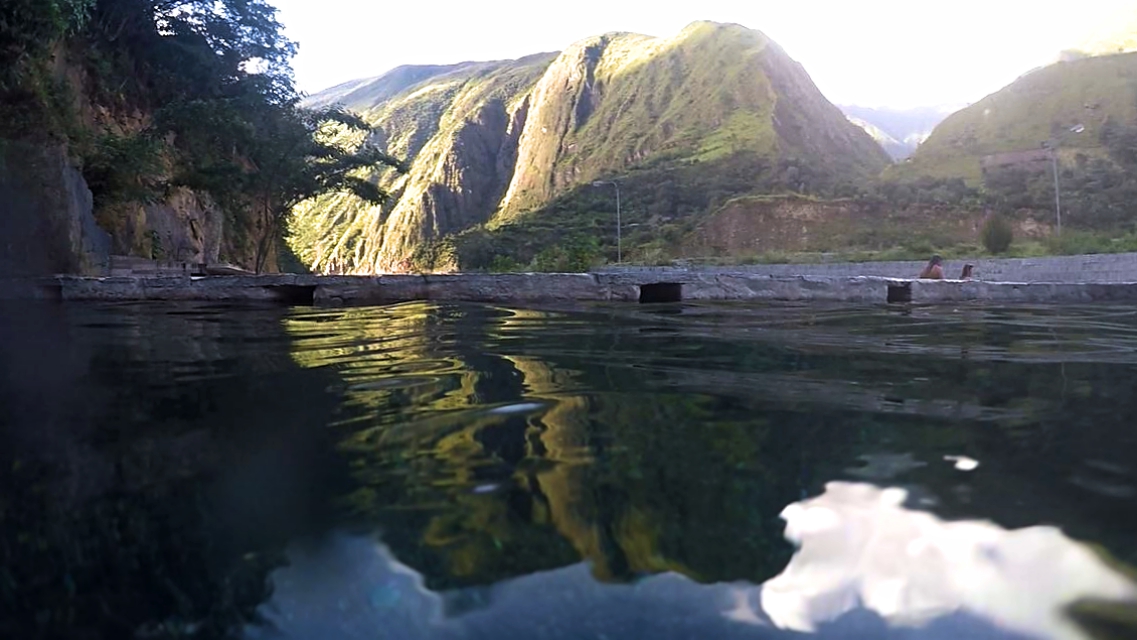
Day 4 on the Salkantay trail
The fourth day you will be walking along a dusty road (or take a collectivo for this lap ) to Hydroelectrica. From here it is a 2.5 hour walk along train-tracks to Aguas Calientes. The walk is easy, the scenery again totally different from the day before and the occasional train slowly puffing by every once and a while makes it a really enjoyable part of the trek.
You’ll arrive in Aguas Calientes in the afternoon where you will bed down in an actual bed. Believe me when I say that you will be very grateful for that. The next day you wake at 4:00 AM to reach Machu Picchu before the sun rises. After climbing what seems like a thousand stairs you arrive at the site. The ultimate reward for the hard but fulfilling Sankantay trek to Machu Picchu. Check out this read on visiting Machu Picchu.
Getting back to Cusco
After Machu Picchu many take the train and bus back to Cusco. If you are traveling on a budget or consider yourself an adventurous traveler, walk back to Hydroelectrica along the tracks and hop on a bus back to Cusco. Its very bumpy, nauseating and will take 7 hours but will cost only about 20 soles. To find out how to do so exactly you should read this article, which explains all options going from Aguas Calientes to Cusco and vice-versa.
I really really really hope that after reading this you will consider doing this trek. National Geographic named the Salkantay Trek to Machu Picchu one of the top 25 treks in the world and rightfully so. Even if you are not into climbing and trekking, I am sure this one will change your mind!
– Things to take when traveling to Peru –
There are a few items that I would pop into my bag for a trip to Peru. Firstly, always take many layers of clothing with you. Being in the Andres means that the weather switches rapidly. Be prepared for both sunshine and rain. But more importantly, be prepared for rapid switches in temperature. Thermals and swimming shorts in the same daypack? In Peru its not as weird as it sounds.
Fjallraven trapper hat
Even in the coldest nights on the altiplano you won’t get cold ears while wearing this trapper hat. It’s simply not possible. The big advantage of trapper hats compared to beanies is that they warm up your whole head instead of just the top and they fit tightly around your head, meaning you wont lose it while mountaineering in the Andes. Fjallraven Kanken is a Swedish premium brand that uses sustainable materials. Also their products just look damn good. It’s a little investment, but one that’s worth it.
Thermals
Besides wearing a warm hat or beanie, the best addition to your travel wardrobe is skintight thermal underwear. Super comfy, light, small to pack and it transforms any normal pants into super warm isolated pants. I value thermal underwear over a thermal shirt because to warm up your upper body you can simply stack all the shirts you are carrying on top of each other while stacking multiple pants is harder. Also your legs are not used to this added layer so wearing thermals will work wonders on the ‘feel temperature’. LAPASA thermals are designed for travel and come in at a very good price.
Power bank
The usefulness of a power bank is self-explanatory. Being able to charge your phone, tablet, camera, GoPro or e-reader on the go has made traveling so much easier. I use this particular power bank over a year now and its just perfect. The 20,000mAh provides my IPhone with about 5 charges, the double port means I can charge my camera and phone at the same time (or be a life saver for the person sitting next to me) and the LED torch in the middle is super useful when you try to find something in your bag on the bus in the middle of the night. The display is useful as well and tells you a whole lot more about the current charge compared to ‘3 out of 5 lights left’. Oh and it comes in at HALF THE PRICE of a Anker power bank. I have yet to find its flaws.
Lonely Planet
Because its just the best compact travel guide out there. I always take a lonely planet with me for its practical information, background on certain sights and for when I find myself unexpectedly off the beaten path in search of accommodation for the night. For me this is still the best way to read up on a destinations in long haul bus rides. You don’t need internet or battery-life which even on a luxurious bus in Peru can really come in handy sometimes;)
